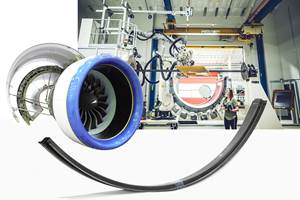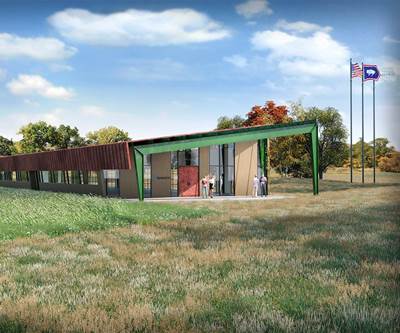Research of developing coal, oil into low-cost carbon fiber advances
Western Research Institute and academic and industry partners advance into the second year of a research project to turn coal, crude oil and biomass into low-cost carbon fiber.
A research project led by Western Research Institute (WRI, Laramie, Wyo., U.S.), aimed at lowering the cost of carbon fiber for use in the automotive industry, has been approved by the U.S. Department of Energy (DOE) to proceed into the second year of a three-year program.
The carbon fiber research project, titled “Consortium for the Production of Affordable Carbon Fibers in the United States,” supports the program goals of the DOE Vehicle Technology Office (VTO), within the Office of Energy Efficiency and Renewable Energy (EERE), to reduce the weight of cars by lowering the cost of carbon fibers to $5 per pound or less, which reportedly will result in improved fuel economy and reduced emissions. The initial cost analysis from WRI predicts that the cost to produce carbon fiber will be lower than the $5 per pound target identified by the automotive industry.
According to Don Collins, WRI CEO, during the first year three materials were studied as potential candidates for natural carbon fiber: coal, crude oil and biomass. The coal and crude oil produced pitch-based carbon fiber, while the biomass produced PAN-based fiber. Each type of fiber, Collins says, has different properties making it suitable for particular applications.
All three materials passed the project’s strength goals for phase one of the project, Collins says. Going into the second year, the researchers plan to improve the quality of the materials aimed toward production. Another project goal is to develop a predictive modeling software to more accurately predict how changes in both the starting material composition and the production processes relate to carbon fiber strength.
“Our team exceeded the first-year goals, and we are very excited for the progress to continue in the second year of our project,” says Collins. “We greatly appreciate the confidence this decision shows in our team.”
The WRI-led consortium also includes members of the University of Wyoming’s Mechanical Engineering Department, researchers from the Massachusetts Institute of Technology (MIT) and Oak Ridge National Laboratories (ORNL, Oak Ridge, Tenn., U.S.) and several private firms. The project was selected for negotiations under a competitive funding opportunity with the final negotiated project valued at $5.2 million. Work on the project began in 2017. Industry partners include Ramaco Carbon (Sheridan, Wyo., U.S.) and industry advisor Solvay in South Carolina.
WRI is also partnered with a team led by the Grossman Group at the Massachusetts Institute of Technology, which applies advanced multiscale computer modeling (from atoms to carbon fibers) and machine learning predictive methods to identify how the various starting material compositions relate to the compounds produced in the multiple production stages, and finally in carbon fiber strength. The accuracy and precision of these predictive programs will be improved in the project’s second year, using additional data developed throughout the consortium team.
Additionally, a team from the University of Wyoming’s Department of Mechanical Engineering, led by Dr. Fertig and Dr. Frick, is fabricating tow-level composites from the fibers and developing advanced finite element modeling tools to improve the design of carbon fiber composite parts for cars.
Southern Research (Birmingham, Ala., U.S.), another member of the project’s consortium, is leading the work to make acrylonitrile from biomass-derived sugars. Advanced Carbon Products (Olive Hill, Ky., U.S.) is turning petroleum-derived pitch to carbon fiber. WRI is working with Ramaco Carbon for converting coal pitch compounds that are then spun into carbon fibers by team members at ORNL. ORNL also conducts fiber strength tests and provides data to MIT and other team members to improve carbon fiber production. WRI is in charge of the chemical characterization of the raw materials and precursors using leading-edge analytical tools, some of which were invented by WRI. That data is key to the development of the predictive models at MIT.
Related Content
The potential for thermoplastic composite nacelles
Collins Aerospace draws on global team, decades of experience to demonstrate large, curved AFP and welded structures for the next generation of aircraft.
Read MoreInfinite Composites: Type V tanks for space, hydrogen, automotive and more
After a decade of proving its linerless, weight-saving composite tanks with NASA and more than 30 aerospace companies, this CryoSphere pioneer is scaling for growth in commercial space and sustainable transportation on Earth.
Read MorePlant tour: Airbus, Illescas, Spain
Airbus’ Illescas facility, featuring highly automated composites processes for the A350 lower wing cover and one-piece Section 19 fuselage barrels, works toward production ramp-ups and next-generation aircraft.
Read MoreCarbon fiber composite pallet revolutionizes freight industry
LOG Point Pallet fuses advanced materials with innovative design and manufacturing to improve supply chains worldwide.
Read MoreRead Next
Ramaco Carbon's innovation campus green-lighted
The iCAM research center will host researchers from national laboratories, universities, research groups and manufacturing organizations with the goal of using coal to create advanced carbon based manufactured products.
Read MoreScaling up, optimizing the flax fiber composite camper
Greenlander’s Sherpa RV cab, which is largely constructed from flax fiber/bio-epoxy sandwich panels, nears commercial production readiness and next-generation scale-up.
Read MoreCeramic matrix composites: Faster, cheaper, higher temperature
New players proliferate, increasing CMC materials and manufacturing capacity, novel processes and automation to meet demand for higher part volumes and performance.
Read More.jpg;width=70;height=70;mode=crop)












